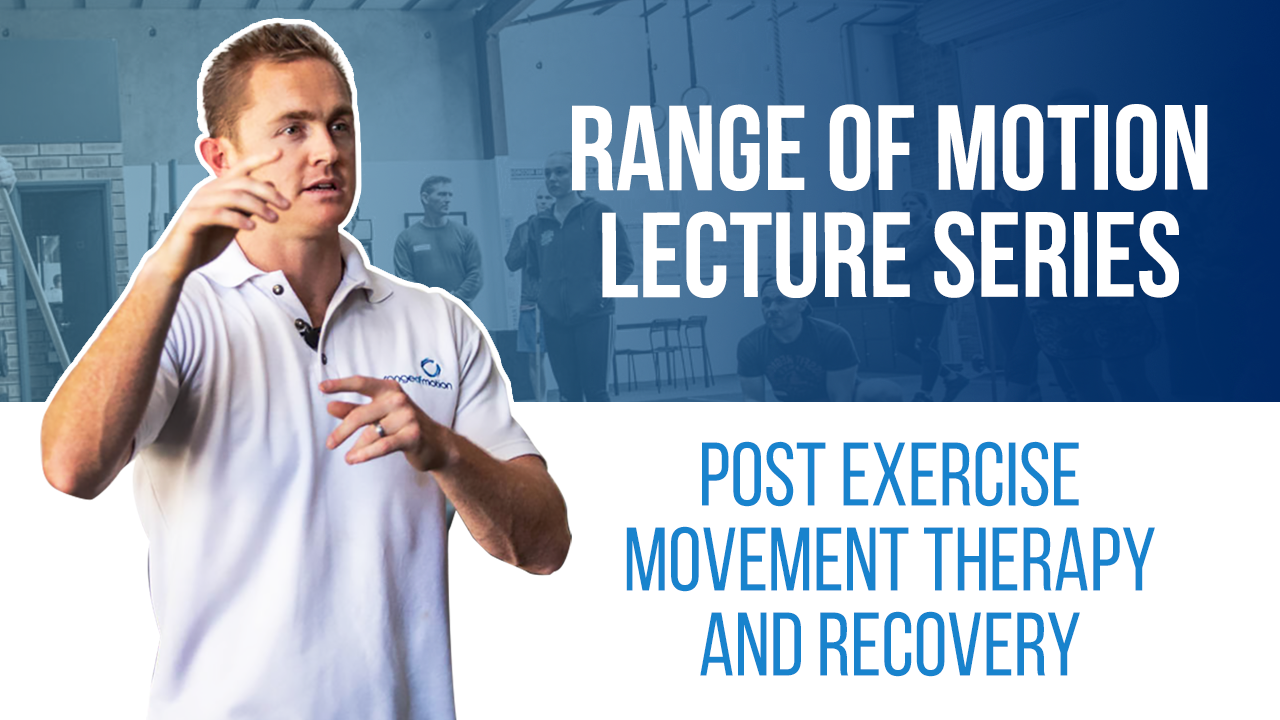Transcribed from video:
– Movement therapy post exercise. This stuff we have covered already. This is my knees are falling in in a squat. I can see there’s a problem. I know what’s causing that problem. I know how to fix that problem. If it’s something’s that tight you need to do PNF for it. If it’s something’s that underactive we need to make it stronger. We need to build our stability, okay? Incorporate these into your training. It will help you with your recovery because good movements, good positions don’t cause injury, don’t cause deconditioning and degeneration like poor movements would. The way that you can actually apply this in terms of we learned the information, we did the education stuff yesterday, the application of these into your training, what I would do is every time in training you go a through certain position. So let’s say a training session has got your front rack position which is one of those six things that we analysed yesterday. Every time you do training and you’re in the front rack position and you notice there is a fault, elbow drops, elbow is wide in the rack position or lower back rounds in the dead lift. Every time you identify that that fault is there do something to fix it, okay? So if we look at an example of thrusters and pull-ups. The thruster contains the front rack position, a squat and an overhead position. So triage,the greatest issue in each of those positions, front rack position, what’s the biggest problem? My elbows are dropping. I’m going to do something to fix that problem. Be it PNF to release or stability strengthening to improve the stability or strength. My knees are falling in on that squat. I’m going to do something to fix that. The overhead position my lumbar spine is hyperextending. I’m going to do some hollow rocks and hollow holds or I’m going to release through my hips whatever the case may be. So that’s how you actually boots on the ground apply the stuff that we did yesterday. Every time you see a fault in a position that you have take the biggest fault for each position and by position I mean squat, sit-up, rack, overhead, etc. Take the biggest fault, triage it, do something to fix that. That way you’re always working to improve what needs improving. Also after training after you’ve done your movement therapy some sort of soft and deep tissue release techniques. We did some of that work last night with the rolling, with the fascia work, massage, foam rolling, trigger point, ball work using the muscles which were most active in that session. You’re doing a lot of squats focus on your quads. Doing a lot of dead lifts focus on the lower back, etc., whichever muscles are the limiting factor working hardest in that session do that. For each movement in your session complete some form of recovery work for the muscle group that did the most amount of work in that session.





